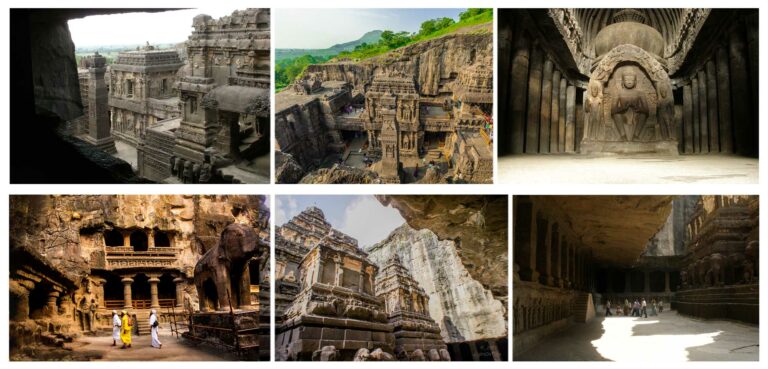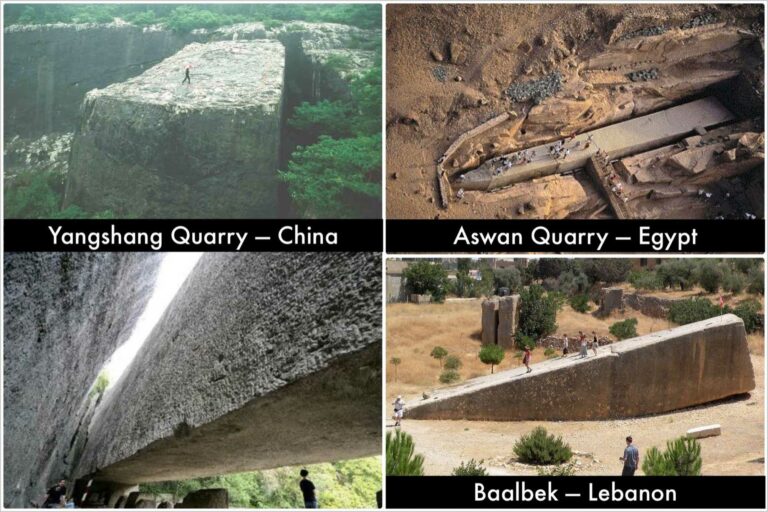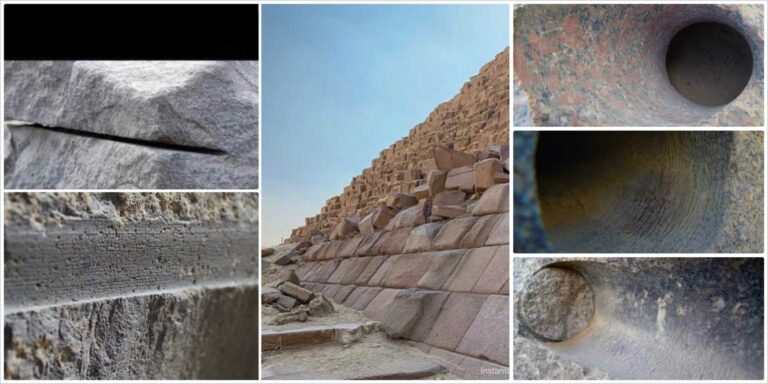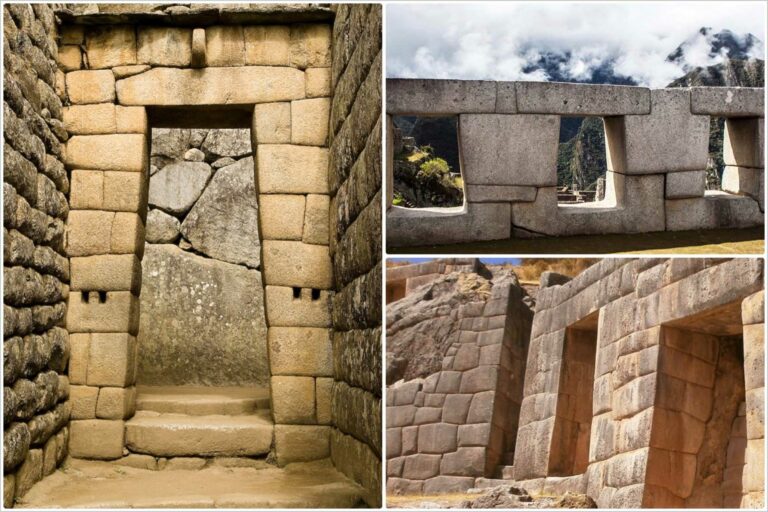Lost Ancient Technology
In ‘Lost Ancient Technology’ Kalki Dasa argues that the technology of ancient civilisations such as Vedic India may have been more advanced than is currently believed, and that this idea has been dismissed by establishment science due to biases and a belief in linear evolution under the sway of Eurocentricism.

We generally think that our modern world is at the height its technological development. Worldwide communication is now instant and effortless, our vehicles can drive themselves, and our computers fit in the palm of our hand. To suggest that our ancient ancestors had technology superior to what we have today is laughable to most of us, considering what sort of tools our ancestors had at hand and the primitive culture they were a part of.
In the struggle for existence some civilisations expire, while others survive and spread. It is a natural fact that certain adaptations allow one civilisation to prevail over another, and after many generations these adaptations become the ‘technology’ we know of today. These technologies have improved our military power, extended our sense of perception, and to some degree even prolonged our lives. By this metric, it is hard to argue that there has ever been a more advanced civilisation than now, at least in recorded history. But what if there was a different metric for measuring the advancement of a civilisation?

It’s important to recognise how we’ve come to the position we are in today. A long history of information suppression went on in the middle ages. For nearly a thousand years the ruling powers prevented laymen from reading any books including even the Bible. It was during this time that ancient texts predating the bible were burned, and pagans were eliminated, or forcefully converted to the state religion of Christianity. The practical knowledge of many topics like natural medicine, agriculture, and public sanitation were lost along with the people who preserved it, and were replaced with the church’s alternatives. Europe in the Middle Ages was plagued with epidemics, famines, and religious wars. These same calamities spread to the Americas when colonial powers brought war and disease to the Incas and Aztecs, resulting in the end of those civilisations.
It was indeed a dark time for many parts of the world.
Meanwhile, the Islamic Caliphate gradually conquered much of Europe, North Africa, and the Middle East, bringing with it a great deal of ancient knowledge preserved by Muslim scholars. Over time, that knowledge began to spread throughout the Western world, giving rise to many important discoveries by scientists like Galileo and Issac Newton. Renowned mathematician and historian Bertrand Russell explains as follows:
“While in Persia, Muslims came in contact with India. It was from Sanskrit writings that they acquired, during the eighth century, their first knowledge of astronomy. About 830, Muhammad Ibn Musa al-Khwarazmi, a translator of mathematical and astronomical books from the Sanskrit, published a book which was translated into Latin in the twelfth century, under the title Algoritmi de numero Indorum. It was from this book that the West first learnt of what we call “Arabic” numerals, which ought to be called “Indian.” The same author wrote a book on algebra which was used in the West as a text-book until the 16th century. (‘Mohammedan Culture and Philosophy’, Bertrand Russell)
Catalysed by a growing frustration with dogmatic religious fundamentalism, and the injection of ancient knowledge from the East, the European scientific revolution was ignited between the late 16th and 17th centuries. This period of history formed the foundation for western scientific thinking, and gives some insight into the way we look at civilisation and technology today.
At present archaeologists identify a few bones, some old pottery shards, or some knee-high walls and make confident conclusions about how these people lived, and what gave them purpose in life. Many establishment academics seem to consider these ancient sites as originating from relatively unsophisticated societies, almost as if they had an agenda. The fact is that this discipline of archaeology was born under the church’s influence which was certainly motivated to prove the world was only five-thousand years old, and how all human beings were descended from Adam and Eve etc. Modern archaeologists appear to have a collective dissociative amnesia when it comes to ancient ‘myths’ of advanced civilisations or any kind of global culture and technology that may have existed in the unrecorded millenia of history. When scientific disciplines broke off from the church in later history, they still held on to many Eurocentric, dogmatic views that were instilled by the same authorities they eventually rejected.
A few centuries later, anthropology emerged when the British empire dispatched scholars and educators throughout the world with the express purpose of converting subjugated territories into ‘civilised’ European settlements. For instance, the Englishman Thomas Macaulay spoke the following in relation to bringing western education to India:
“…I have read translations of the most celebrated Arabic and Sanskrit works. I have conversed, both here and at home, with men distinguished by their proficiency in the Eastern tongues. I am quite ready to take the oriental learning at the valuation of the orientalists themselves. I have never found one among them who could deny that a single shelf of a good European library was worth the whole native literature of India and Arabia. The intrinsic superiority of the Western literature is indeed fully admitted by those members of the committee who support the oriental plan of education…”
“…And I certainly never met with any orientalist who ventured to maintain that the Arabic and Sanskrit poetry could be compared to that of the great European nations. But when we pass from works of imagination to works in which facts are recorded and general principles investigated, the superiority of the Europeans becomes absolutely immeasurable. It is, I believe, no exaggeration to say that all the historical information which has been collected from all the books written in the Sanskrit language is less valuable than what may be found in the most paltry abridgements used at preparatory schools in England…”
“…We must at present do our best to form a class who may be interpreters between us and the millions whom we govern, – a class of persons Indian in blood and colour, but English in tastes, in opinions, in morals and in intellect…”
(Excerpts from Macaulay’s Minute on Indian Education 2 February 1835)
With this sort of bias in mind, it isn’t surprising that the investigation of early anthropologists resulted in a very limited analysis of the cultures they encountered. The truth is that establishment science doesn’t want to entertain the idea that ancient cultures possessed any higher knowledge simply because it doesn’t fit into the paradigm of linear evolution, and Eurocentric supremacy.
The Webster dictionary gives a suitable definition for technology as ‘the application of scientific knowledge for practical purposes’. Our current method of measuring whether a technology is advanced or not is based on raw factors like economics, military application, and its potential to generate pleasure. People of the ancient world also saw technology in this way, but with added elements like sustainability and sacred function. These added elements insured a society which would be in harmony with the natural world, and promote spiritual development.
The tendency to believe that by military strength one culture is superior to another is in fact a very old idea. In the ancient world, the way one warring tribe would establish themselves over another was by defeating their enemies and reasoning they won because their gods and religion were superior. The tendency to reject ancient wisdom nowadays seems to follow a similar pattern of logic. By reasoning that science has now enabled us to easily conquer and control more of the resources of nature, this has become the imperial standard of measuring a civilisation’s advancement. On the other hand, because previous civilisations were fundamentally simple, polytheistic, and spiritually inclined, they have been dismissed as primitive.
What is harder to dismiss however are some of the mind-bending discoveries made at ancient sites throughout the world. Baalbek, Lebanon for instance has a megalith (single block of cut stone) which weighs over 2000 tons. Granite blocks in Egypt from 4,500 years ago show evidence of machined saw cuts, and drill cores. Building structures made of volcanic rock at Machu Pichu, Peru are so tightly fit you cannot even insert a piece of paper between the joints of the blocks, what to speak of these stones appearing to have been moulded out of clay… Many of the stones at these sites come from quarries hundreds of miles away, sometimes crossing mountain ranges to get there. How such incredible feats of engineering could be accomplished is a great mystery, and for many researchers — clear evidence of lost ancient high technology.

Lost Ancient Technology – Ancient Stone Quarries – Megaliths
Nowadays many people question the narrative that the pyramids of Giza (Egypt) were built by slaves, pulling 2.5 ton blocks up ramps. However, if you go on YouTube, you can find many individuals using simple wooden tools like levers and pulleys to easily lift and manipulate stone blocks of that size. In fact, one man in Florida created a complex with stones of that size (1,100 tons in total) which he quarried on his own. The complex is called ‘Coral Castle’, and is open for public tours. It’s not unreasonable to suggest that Egyptian slaves may have constructed the pyramids using such tools. What is harder to understand however, is how 200 ton granite obelisks could be quarried in Aswan, Egypt, and bought six hundred miles to their destination nearly 4,500 years ago. Such feats would be possible today only with state-of-the-art machinery, and remarkable engineering techniques.
One reason why establishment archaeology struggles to accept the idea of advanced ancient technology is because the academic curriculum for Egyptology was written at the turn of the century. Because their technology was limited at that time, archaeologists reasoned that people of the ‘bronze age’ built the pyramids using only copper chisels, stone hammers, and wooden rollers. In recent times, manufacturing engineers have visited sites like the Giza plateau, and identified machined marks and drill cores on granite blocks which could only have been made today with diamond tipped saws and drill bits.

Lost Ancient Technology – Ancient Drill and Cut Marks – Egypt
(Drill cores and machine cut marks in stone blocks on the Giza Plateau)
Machu Pichu in Peru is another enigmatic site that deserves attention. At first glance, Machu Pichu appears to be an ancient Incan site, built nearly 600 years ago on top of a mountain (which in itself is pretty amazing). Under closer examination, another style of construction completely can be found beneath the Incan style. Massive, sculpted blocks of basalt (volcanic rock) are fit together like a perfect puzzle. These structures can be found in various ancient sites all throughout Peru as a base layer of construction beneath later Incan constructions. When the Spanish came to South America, the Incas told them of a previous culture that was there before them which they worshipped and revered. The Incas said they built their dwellings at these sites, performing renovations to these sacred, ceremonial centres. Today, indigenous Peruvian people say that a chemical process was used to soften these stones, and fit them into place by chanting spells or incantations.

Lost Ancient Technology – Machu Pichu – Peru Stonework(Stone doorways and walls in Machu Pichu, Peru)
Many proposed technologies used in ancient sites have been suggested throughout the years by archaeologists and alternative researchers alike. For the moving of megalithic blocks (2.5 tons or more) it has been suggested that boats, carts, and wooden rollers have been used. It’s even been suggested that elements such as monoatomic gold (a rare powdered form of gold) were used to make stones weightless and therefore easily transportable. The idea of levitating stones using sound vibration has also been proposed in recent years. Scientists such as Nikola Tesla postulated that electric energy harnessed from the earth (free energy) could also accomplish such feats. How stone blocks were cut and shaped could have been the result of diamond tipped saws and drills like the ones we use today to penetrate granite, basalt, and other hard stones. An ancient chemistry could also be responsible for casting stones and shaping them much like we do today with concrete. Many more solutions could be suggested but the point remains the same, whatever our ancient ancestors used has allowed their buildings to last for millennium, and that alone constitutes an advanced civilisation.
Perhaps the most remarkable example of an advanced civilisation is Ancient India. Although for 1,200 years India remained under colonial rule (First by the Mughal emperors and then by the British), Vedic culture has retained its integrity as a source of timeless wisdom. India has absorbed cultural customs like dress, language, cuisine, and musical instruments from other countries, but the philosophy and lifestyle of the Vedic culture has remained intact. Still today you can find village people living virtually the same way they did several thousand years ago. The knowledge and traditions that was handed down to them by their ancestors is still living and breathing today. It is not a distant memory.
Some people may ask why there are no ancient stone monuments in India as old as the pyramids of Giza. Many ancient Indian temples were originally cave temples or were made from perishable materials such as wood – the great stone temples that we see today only came about in India’s medieval period and are characteristic of the rulers of that era who wanted to demonstrate the greatness of their kingdoms.

Lost Ancient Technology sri rangam gopurams – Nila Newsom Photography(Sri Rangam Gopurams – Photo by Nila Newsom)
The people of ancient India were introspective and understood that this life is temporary, and so less importance was laid on the building of impressive stone edifices. Reflecting on the ancient wisdom of the Vedas, the ancient Indian sages understood that by cultivating a simple life centered around self-realization, the knowledge of all other necessary things would come as a natural consequence.
Lost Ancient Technology – Brahmins chanting mantras – fire offering
It is however a mistake to think that Vedic culture was ignorant of technologies like advanced engineering. A number of ancient sites in India are even more baffling than the sites mentioned above. The Kailash temple in Maharasthra was carved out of one gigantic piece of granite.
Lost Ancient Technology – Kailasa – Ellora Caves
 (Kailasa Temple in Ellora Caves, Maharasthra: Photo Credit – Wikimedia Commons)
(Kailasa Temple in Ellora Caves, Maharasthra: Photo Credit – Wikimedia Commons)
A careful look into the ancient architectural texts by Maya Danava (Chief engineer of the asuras) will show how the Vedas discussed concepts of unmatched ancient technology. The asuras are described as materialistic/atheistic leaders who were driven out of Ancient India and brought with them the knowledge of construction, science and rituals.
A growing body of evidence is now beginning to confirm that a shared technology was common to many ancient civilisations throughout the globe. Could Ancient India be the origin?
In the search for the origins of civilisation, it appears that ancient India has been woefully neglected. Perhaps the British were able to successfully ‘re-educate’ the Indians into overlooking the magnitude of their own culture’s greatness. It’s also a fact that much of the history of India was lost when Moghul invaders destroyed countless ancient monuments and libraries like the one in Takshashila, and Nalanda*. Whatever the case, it should be mentioned that India has indeed produced many of the world’s most brilliant and innovative scientific minds of the past, as well as the present. Therefore, it may not be surprising that when Europe fell into darkness, the practical knowledge of numbers and astronomy came to the rescue from the East, from a culture whose technology and knowledge had already passed the test of time.
*Taksashila (Taxila) University in modern day Pakistan was rumoured to be even more extensive than the Library of Alexandria (Once housing 400,000 ancient scrolls). Invading Huns destroyed the library in the 5th century CE.
*Nalanda University in modern day Bihar, India was destroyed in the 12th century CE by Mughal invaders. Nalanda was said to have housed 9 million ancient manuscripts. Historians remark that it took nearly three months for all the texts to be burned.
Related Post
A shocking documentary proves that mermaids do exist
SHOCKING Revelation: Thuya, Mother of Queen Tiye, Was the Grandmother of Akhenaten and Tutankhamun—What Ancient Egyptian Secrets Did She Leave Behind?
Breaking News: Astonishing Discoveries at Karahan Tepe Confirm an Extraterrestrial Civilization is Hiding on Earth, and NO ONE Knows!
Breaking News: Researchers FINALLY Discover U.S. Navy Flight 19 After 75 Years Lost in the Bermuda Triangle!
NASA’s Secret Investigation: Uncovering the Astonishing Mystery of the UFO Crash on the Mountain!
Explosive UFO Docs LEAKED: Startling Proof That Aliens Ruled Ancient Egypt!